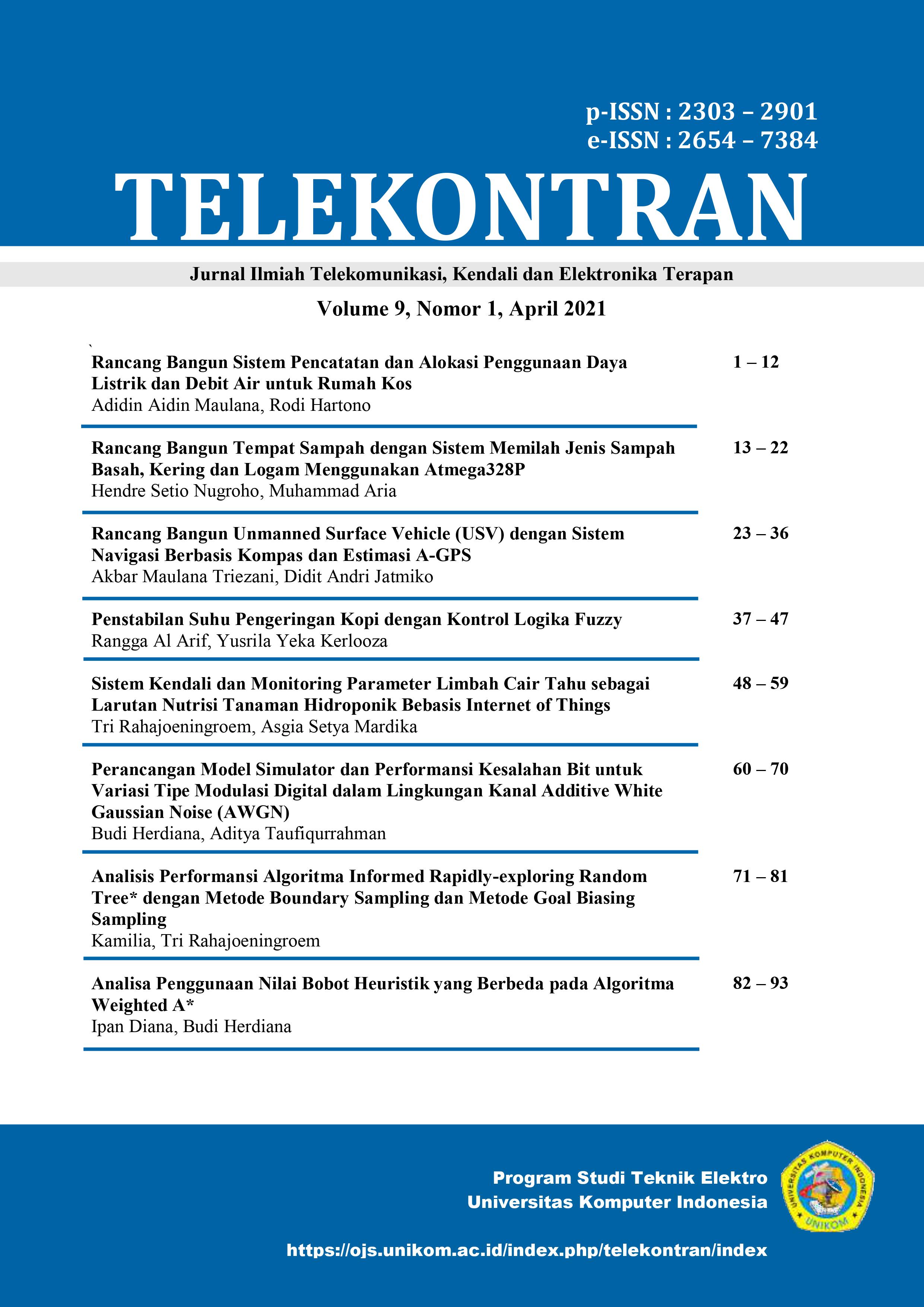Simulator Model Design and Bit Error Performance for Variation of Digital Modulation Type In the Channel Environment Additive White Gaussian Noise (AWGN)
Main Article Content
Abstract
This study was made based on the problems in previous studies, which did not display the signal wave after passing through the Additive White Gaussian Noise (AWGN) channel, as well as displaying the simulation results of the bit error comparison displayed in the form of a curve graph for various types of modulation. In addition, the bit error probability signal waveform is still displayed separately and has not analyzed the calculation with the simulation results. So in this research, the development of the source code will be carried out and also the Matlab graphical user interface (GUI) will be made along with the theoretical calculations. In the simulation results, the minimum number of bits of 100 bits is for amplitude shift keying (ASK) modulation, for frequency shift keying (FSK) modulation and for binary phase shift keying (BPSK). While the maximum number of bits is 500 bits, we get for ASK modulation, for FSK modulation, and for BPSK modulation. From these two data, it shows that the simulation data is in accordance with the existing theory, where the greater the bit energy used, the smaller the bit error rate (BER) will be. The suitability of the simulation with the theory is also supported by the results of the calculation of the bit error probability. Simulation results and theoretical bit error probability have the same characteristics, where BPSK modulation has a better bit error probability reduction than ASK and FSK modulation. In addition, it was found that the calculation experienced a smaller and ideal bit error reduction for each Eb/N0 which was the same for each experiment.
Downloads
Article Details
Section

This work is licensed under a Creative Commons Attribution-ShareAlike 4.0 International license.
